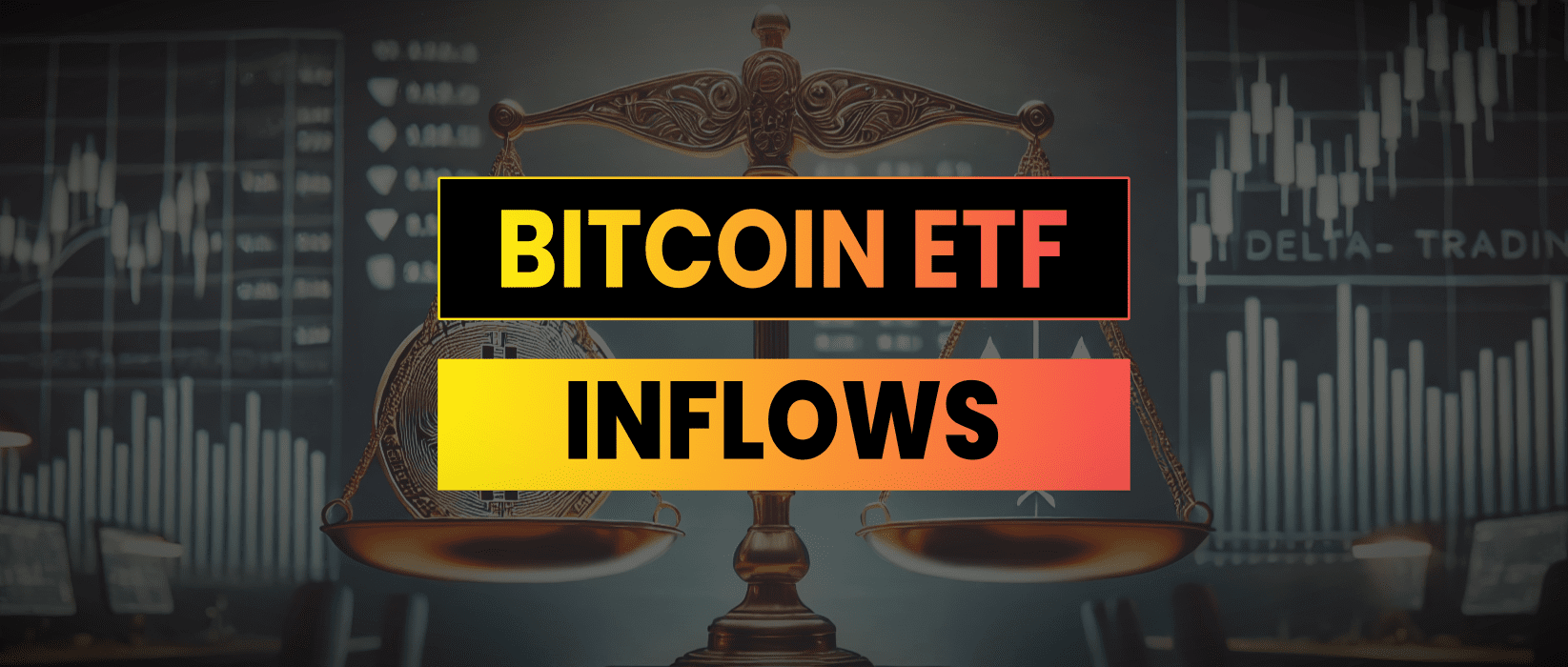The Bitcoin Spot ETFs are a gateway for institutional inflows into Bitcoin, potentially driving up prices. However, on the 29th and 30th October over $1.763 Billion USD flowed into the Bitcoin ETFs*. During this period the BTC/USD price barely moved. Here’s a closer look at why spot Bitcoin ETF inflows don’t always translate into an immediate price increase.
Delta-Neutral Trading Strategies
Another significant reason why spot Bitcoin ETF inflows don’t necessarily push prices up is the use of delta-neutral strategies by some funds. The “basis trade” or “cash and carry trade” allow investors to hedge against directional risk, effectively neutralizing exposure to Bitcoin’s price movements. Here’s how it works in the context of a Bitcoin ETF:
- Buy 1 BTC in spot markets
- Short sell 1 BTC in futures markets
- Collect funding rate premium
This allows them to collect the funding rate or difference in price between spot and futures. This difference or premium is cerated by the demand for leverage which traders will pay for on futures markets.
The trade is delta-neutral which means there is no directional exposure to Bitcoin price movements but it can offer significant yields.
In bullish market conditions there is more demand for leverage increasing the yields available on basis trades.
Because Bitcoin is bought in one market and sold in another there is little impact on price but the volume is stil reported in the spot ETF flows.
Since these funds are buying spot Bitcoin while simultaneously shorting an equal amount in the futures market, the overall net impact on Bitcoin’s price remains balanced. The demand generated by spot purchases is offset by the selling pressure from shorting the futures, preventing a significant upward price movement.
Delayed Reporting & Settling Of Inflows
The inflows into these ETFs aren’t reported or settled in real time, and delays create an opaque picture of demand. This delay can lead to market participants being uncertain about the actual volume of inflows, which mitigates the immediate impact on price. By the time significant inflows are reported, much of the buying may have already occurred, creating less of an immediate effect.
When an investor purchases shares of the IBIT ETF on the secondary market, BlackRock is not directly involved in the transaction. Instead, the trade occurs between investors, and the total number of IBIT shares in circulation remains unchanged. Consequently, BlackRock does not need to adjust its Bitcoin holdings in response to these secondary market trades.
However, if there’s significant demand for IBIT shares Authorized Participants, typically other banks, may step in to create new shares. In this process, APs deliver cash to BlackRock, which is then used to acquire the corresponding amount of Bitcoin. This creation process ensures that the fund’s assets accurately reflect the value of the newly issued shares. The regulatory requirements also mandate the funds have a period of time to settle the orders and increase their holdings.
The timing of these creations is influenced by market demand and the discretion of the APs. While the exact timeframe can vary, the creation and redemption mechanism is designed to maintain the fund’s alignment with the underlying Bitcoin holdings.
Schwab has an excellent explanation of this process here: https://www.schwabassetmanagement.com/content/understanding-etf-creation-and-redemption-mechanism
The uncertainty around the exact timing and volume of these inflows can contribute to a more muted impact on price movements.
Market Liquidity and Absorption
The Bitcoin market has become increasingly liquid in recent years, especially as institutional participation has grown. As a result, large inflows from ETFs may not have as strong an impact as they would in previous market conditions or other less liquid markets. High liquidity allows the market to absorb large buy orders without drastically moving the price.
Occasionally when markets move significantly market makers will pull their orders, reducing liquidity and moving price to extremes. This tends to happen more on the way down however because of the “up the escalator, down the lift” market paradigm and the way market makers define their risk management and tolerances.
Arbitrage traders contribute to this effect by capitalizing on price discrepancies across various markets, further reducing the price impact of large ETF inflows. If an ETF’s spot purchases begin to affect the price, arbitrageurs may buy Bitcoin in lower priced markets and sell in higher priced ones to profit from the difference. This helps stabilize Bitcoin’s price and dampens potential price impact.
The market often prices in expectations before actual events take place. Traders will buy Bitcoin in anticipation of ETF inflows, leading to a “buy the rumour, sell the news” effect, which could mean that the actual ETF inflows are less impactful than expected as trades are closed.
Impact of Spot Bitcoin ETF Inflows
While Bitcoin spot ETFs are an exciting development that could lead to greater institutional involvement in crypto, their inflows don’t necessarily translate into immediate price increases. Delayed reporting, delta-neutral strategies, market liquidity and dynamics all contribute to a complex impact on price.
Spot Bitcoin ETFs undoubtedly increase Bitcoin’s accessibility and legitimacy, and they will likely have a gradual, long-term positive effect on the price.
However, the expectation that these inflows will directly push prices up fails to account for the sophisticated strategies and liquidity dynamics that characterize today’s Bitcoin market. As investors navigate the evolving landscape of Bitcoin ETFs, understanding these nuances will be essential for managing expectations and making informed decisions.


